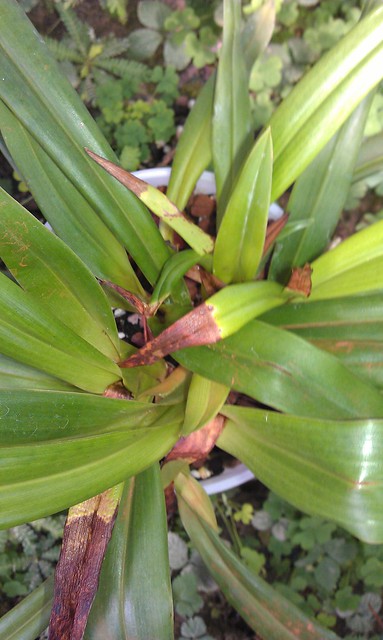K
Kavanaru
Guest
My Phrag. Eumelia Arias has developed some brown dry areas on it's leaves. First I thought it was sunburn and cut off the damaged leaves, and gave it a prophylactic bath with a fungicide... However, the brown areas developed again... I can discard sunburn, as the plant is growing under shade, and also my 5 other Phrags (e.g. Peruflora's Cirila Alca, fischerii, lindenii, wallisi and warszewiczii) that are growing next to it (and under the same conditions and regime) do not develop this problem and are growing very well. Any ideas what this could be and how to treat/solve the problem? Note: the leave are not so yellow as in the pics. I used the flash on my mobile phone and it produced the light yellowish tone.

Phrag. Eumelia Arias 1 by kavanaru, on Flickr

Phrag. Eumelia Arias 2 by kavanaru, on Flickr

Phrag. Eumelia Arias 3 by kavanaru, on Flickr

Phrag. Eumelia Arias 4 by kavanaru, on Flickr

Phrag. Eumelia Arias 1 by kavanaru, on Flickr

Phrag. Eumelia Arias 2 by kavanaru, on Flickr

Phrag. Eumelia Arias 3 by kavanaru, on Flickr

Phrag. Eumelia Arias 4 by kavanaru, on Flickr
Last edited by a moderator:



